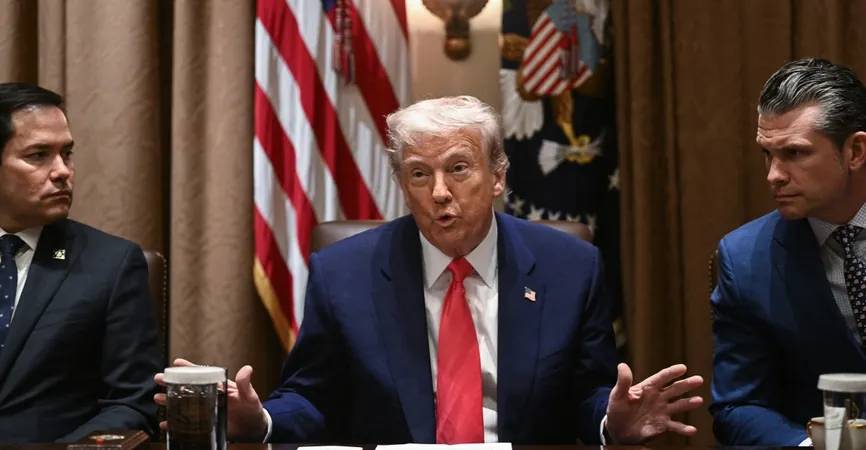
How Trump's Tariffs Are Crushing Low-Income Families: The Hidden Cost Revealed
2025-04-13
Author: Ling
The Shocking Impact of Trump's Tariff Policy
President Donald Trump's tariff strategy has sent shockwaves through Wall Street, left international trading partners uneasy, and even made Americans nervous about their retirement accounts. But the real fallout might hit the most vulnerable Americans hardest.
Confusion Reigns Amid Tariff Changes
After initially announcing sweeping tariffs, Trump backtracked on some before their implementation. Despite this, his trade war with China persists and tariff rates for various other nations remain significantly elevated. The rhetoric from Trump and his supporters suggests that while Wall Street suffers, small businesses on 'Main Street' will thrive. But is this really the case?
A Misguided Narrative
It’s a misconception that only the wealthy are feeling the sting of the tariffs. The reality is far more serious: low-income families are on the brink of major financial distress due to these policies. While tariffs can be beneficial if used strategically, Trump's approach is broad and lacks clear intent, leaving many to wonder who truly benefits.
How Tariffs Affect Low-Income Americans
The looming tariffs will hit low-income households in two critical ways. Firstly, they will drive up prices on essential goods. Tariffs function as a tax on consumption, meaning families will likely face increased costs at the checkout counter as businesses raise prices to absorb the additional tax burden.
According to research from Yale's Budget Lab, average American households could face an additional cost of nearly $3,800, while the lowest-income families will still be impacted significantly, with cost increases averaging around $1,700. However, these families will end up spending a far higher percentage of their disposable income on these hikes compared to wealthier households.
Economic Recession: A Looming Threat
The second major risk posed by these tariffs is a stalling economy. Following Trump's announcements, experts warned of increasing recession likelihood. Even with some tariffs on hold, the financial landscape remains unstable, prompting fears of stagflation—a perilous blend of inflation, unemployment, and stagnant growth.
If a recession materializes, history shows that low-income families suffer the most. For example, during the Great Recession, poverty levels soared, with nearly 5 million additional individuals falling below the poverty line. Job scarcity especially plagues those without university degrees, who inevitably find themselves in lower-paying roles.
Is Change Possible?
The silver lining? This situation is reversible. However, that largely hangs on Trump's willingness to reassess his approach. There are other avenues too. Some Republican senators have backed bipartisan legislation aiming to limit presidential tariff authority. Unfortunately, these efforts may fall short in the Senate.
Furthermore, legal challenges could arise, with some conservative groups already contesting Trump's assertions of emergency power in setting tariffs. But the quickest and most effective change could come only from Trump himself, making it hard to predict the next steps.
Contrasting Priorities
In sum, Trump's recent tariff policies starkly portray his priorities: higher costs for the poor while protecting wealthier interests. As uncertainty hangs in the air, low-income families brace for a potentially stormy economic future.



 Brasil (PT)
Brasil (PT)
 Canada (EN)
Canada (EN)
 Chile (ES)
Chile (ES)
 Česko (CS)
Česko (CS)
 대한민국 (KO)
대한민국 (KO)
 España (ES)
España (ES)
 France (FR)
France (FR)
 Hong Kong (EN)
Hong Kong (EN)
 Italia (IT)
Italia (IT)
 日本 (JA)
日本 (JA)
 Magyarország (HU)
Magyarország (HU)
 Norge (NO)
Norge (NO)
 Polska (PL)
Polska (PL)
 Schweiz (DE)
Schweiz (DE)
 Singapore (EN)
Singapore (EN)
 Sverige (SV)
Sverige (SV)
 Suomi (FI)
Suomi (FI)
 Türkiye (TR)
Türkiye (TR)
 الإمارات العربية المتحدة (AR)
الإمارات العربية المتحدة (AR)